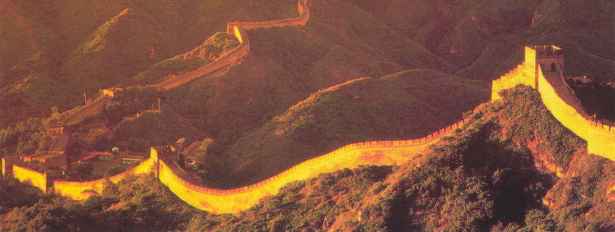The Great (Fire)Wall of China

If you happen to be in mainland China by chance and search a seemingly harmless word “Huluobo” (Mandarin for carrot!), you would get a plain white blank screen. Mammoth and sophisticated, yet evidently crude at times: the Great Firewall of China.
Internet regulation in China is done by Internet Monitoring and Surveillance units in every city plus three huge firewalls in Beijing, Shanghai and Guangzhou. Websites, blogs, chatrooms and even text messages are scanned and matched against a list of “sensitive” terms. If found “objectionable, obscene or a threat to stability of the country” you either get a blank screen on your computer or mobile, or search results with descriptions but no hyperlinks to the banned sites. So your quest for more information about “carrot” is censored because in Mandarin, it matches the surname of the Chinese President Hu Jintao. And yes, searching about their political leaders is not allowed. Other so-called “objectionable” content includes the unemployment statistics of the country.
Although it has received severe criticism from human rights activists, the Chinese censorship model is seen by many countries that plan to censor internet as a successful model in place.
This belief stems from the fact that censorship in China is not only about firewalls and scanners.
Read on to know more about “insider” spying and censorship…
The Chinese government employs thousands, whose daily job includes being the “insider” in chatrooms, forums and blog discussions. From there, they work to portray a positive image of the Government and turn the public opinion in case of a public outcry.
Voices that rise in reaction to government’s questionable policies or sensitive issues like the Tiananmen Square incident are similarly censored. From there on, owners of these blogs or websites are warned, blacklisted or invited to “tea” with local government officials.
Censorship is also being started at the user-side, with China’s leading IM service QQ imbedding a text-blocker in their instant messenger, that does the ‘cleansing’ at source. Green Dam, the government sponsored internet-filter is installed mandatory in all licensed internet cafés. When the government pushed last year for its inclusion in every Chinese-made computer, it pushed the people against the wall (pun intended) which lead to an outcry from users and industries, throwing the government on the back foot.
Government also promotes “self-censorship”. To stay in the good books of the government, popular Chinese websites like Baidu (the most used search engine in China) employ many Web administrators who censor or delete objectionable content from their websites.
From the point of view of a Chinese webmaster, what is most frustrating is that no clear line separates the dos and the don’ts. So an invitation for “tea” from officials is always looming like dark clouds overhead.
Read on to know more about China’s common man reacting to Google’s withdrawal, and more…
But like everything suppressed, people of China are now trying to wriggle free and jump this Great Wall. At last count, 1 million of the 384 million internet users were using Tunnels, Proxies or Virtual Private networks for uncensored web access. Just like the Mongol Invaders of ancient times, the citizens of China are pushing the wall back.
Image courtesy: China Digital Times
On Saturday, April 10th, 2010, the withdrawal of Google led Chinese people to lay wreaths of flowers at the HQ of Google, which clearly showed their allegiances. People wouldn’t have stood by their government in a month of such Saturdays.
To avoid this scenario, a recent congregation of Chinese Internet leaders in the southern city of Shenzhen proposed that Shenzhen be made a censorship-free zone for a trial period, to see how the Chinese people react to a censorship free internet. The Internet portal NetEase published a report of the meeting.
It was deleted the same day.



